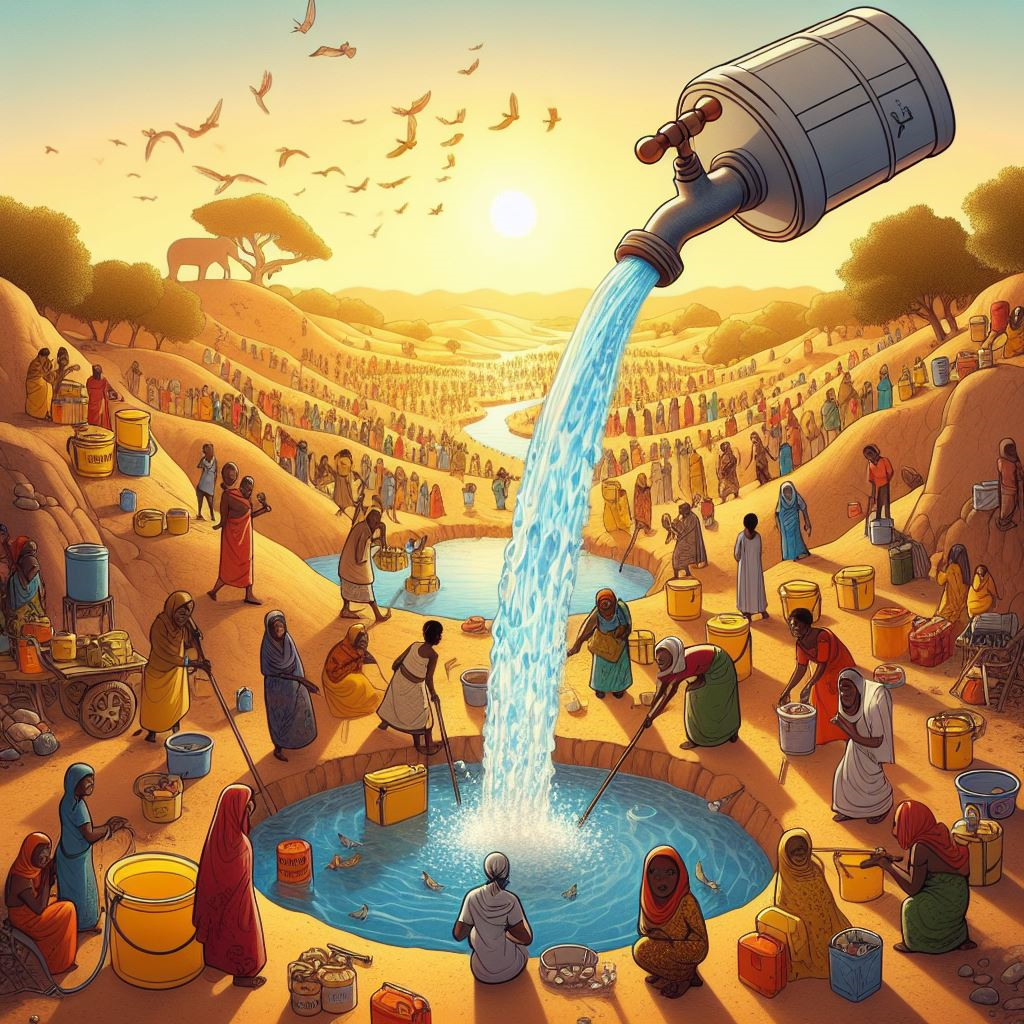In the arid landscapes of Burkina Faso, a groundbreaking study sheds light on the nuanced experiences of water insecurity based on gender and livelihood.
In the arid landscapes of Burkina Faso, where the availability of safe water fluctuates with seasonality and rainfall, a groundbreaking study sheds light on the nuanced experiences of water insecurity based on gender and livelihood.
Conducted by Elisabeth Kago Ilboudo Nébié, an assistant professor at Arizona State University’s School of Human Evolution and Social Change, the research challenges previous studies that focused solely on the perspectives of women in the Sahel region. Instead, Ilboudo Nébié and her colleagues examined both genders within husband-and-wife pairs, considering their respective livelihoods.
The study, titled “Why Livelihoods Matter in The Gendering of Household Water Insecurity,” was recently published in the journal Weather, Climate, and Society. ASU News spoke with Ilboudo Nébié to delve into the key findings and implications of this research.
Understanding Water Insecurity Dynamics
Past research often emphasized women’s predominant responsibilities related to water-related tasks such as housework, fetching water, and cooking. However, this study delves into the experiences of both husbands and wives within the same household, revealing nuances in their perceptions of water insecurity.
The researchers found that the divergence in spousal perspectives suggests that livelihood strategies play a crucial role. While women engaged in crop farming reported higher water insecurity, men involved in herding activities reported more water insecurity compared to their wives. This underscores the importance of considering livelihood strategies when examining water insecurity experiences.
The Role of Livelihoods in Water Insecurity
Livelihood strategies, encompassing activities like farming, herding, and income-generating pursuits, significantly influence individuals or households’ ability to sustain their living. In the context of safe water insecurity, these strategies can positively or negatively impact experiences.
For instance, women involved in crop farming reported more water insecurity, consistent with previous studies. However, men engaged in herding faced more water insecurity compared to their wives, highlighting the variability in gender experiences depending on livelihood.
Implications for Research and Policy
The study suggests a shift in research designs to examine intra-household dynamics and avoid generalizing findings to the entire household. By doing so, a more accurate understanding of water insecurity can be achieved, enhancing the effectiveness of research, development, and policies in regions facing water scarcity challenges due to rainfall variability.
The findings emphasize the importance of recognizing the diversity of experiences within households and tailoring interventions accordingly.
Water Insecurity and Gender Dynamics
The research uncovered that safe water insecurity experiences are not only highly gendered but also vary based on the household’s chosen livelihood strategy. Crop farmer households, typically larger, were found to consume more water for domestic uses compared to smaller livestock farmer households.
In Fulani herding households, securing water for livestock became predominantly men’s responsibility, as they navigated challenging landscapes, often traveling long distances in search of water and pasture. The stress on men to secure water is exacerbated by factors like rainfall variability and socio-economic challenges.
Water Sources and Transportation Methods
In the study area, various water sources, including tube-protected wells, boreholes, protected springs, and rainwater collection, serve domestic needs. The means of transporting water varied based on gender, livelihood activity, and ethnicity.
For instance, women typically did not transport water on motorbikes, as ownership was less common among them. Water storage involved different types of containers, generally acquired through purchase or borrowing.
This comprehensive study contributes significantly to understanding water insecurity in Burkina Faso by highlighting the intricate interplay between gender, livelihood, and water availability. By focusing on both husbands and wives within households, the research provides valuable insights into the diverse experiences of water insecurity.
Moving forward, policymakers and researchers can use this nuanced understanding to develop targeted interventions that address the specific challenges faced by different gender and livelihood groups, ultimately fostering more sustainable and equitable water management practices in the Sahel region.
